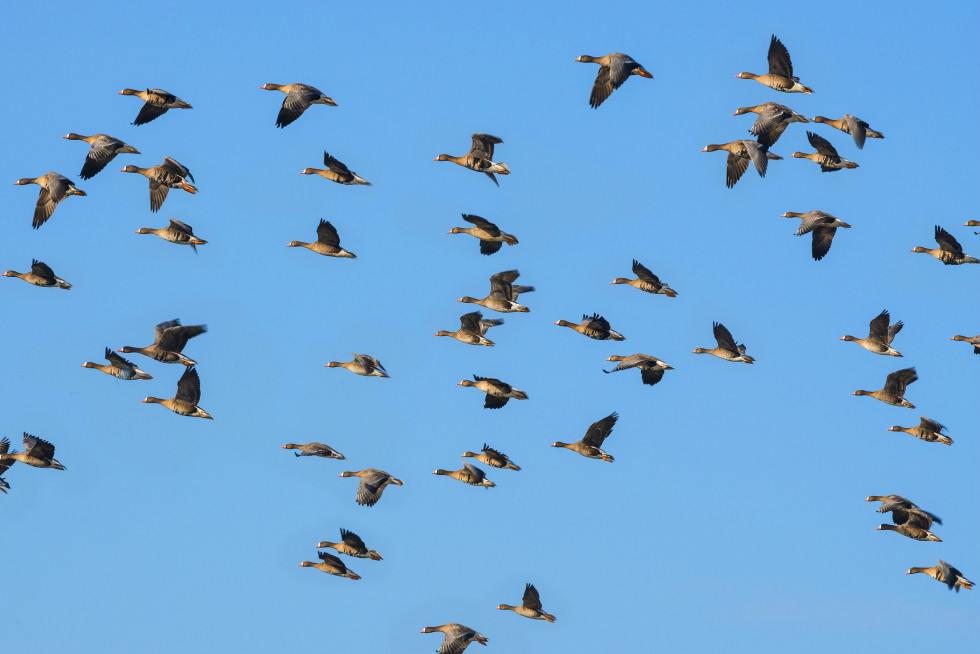Let us preserve migratory birds
- Ministry of the Environment and Spatial Planning

White-fronted Geese | Author LIFE_IP NATURA:SI
Light pollution – a threat for migratory birds
The Birdlife Slovenia (DOPPS) society states that migratory birds are birds that move to other places due to the lack of food (winter, drought). Approx. 19% of all global bird species are migratory birds. This percentage is significantly higher in parts of Europe with distinct seasons. Protecting migratory birds is a special challenge because international cooperation is required to make it happen. Protection at nesting places in Europe is usually not enough because birds are at risk during migrations and in winter quarters where they survive winter. To efficiently protect migratory birds, it is critical to recognise such risks and take appropriate measures. Light pollution is one such risk. Due to artificial lighting, migratory birds lose orientation, which leads to collisions during night migrations. Artificial extension of the day also causes disturbances in their “internal migration clock”. The issue of light pollution is so severe that several cities around the world have adopted drastic measures during the spring and autumn migrations. Several of them dim or turn off public lighting and they also offer relief and technological solutions to private buildings. Despite everything, the risk of light pollution remains a serious problem because the quantity of artificial lighting in the world increases by two per cent annually.
The Decree on limit values due to light pollution of environment limits the impact of excessive light pollution
The Decree on limit values due to light pollution of environment has been in effect in Slovenia since 2007. Light pollution is defined as an emission of light from artificial sources which causes disturbed lighting for human sight, endangers safety in traffic due to glare, disturbs the life rhythm of animals, or wastes electricity due to its radiation in the direction of the sky. This decree defines the protection of nature against the harmful impacts of light pollution, the protection of habitats against the disturbing lighting due to the illumination of uncovered areas, the protection of people against glare, the protection of astronomic observations against the shine from the sky, and for the reduction of electricity consumption for light sources which cause light pollution. The impact of excessive light pollution for the environment is, in essence, restricted in Article 4 of the Decree by prohibiting the usage of lamps which radiate light upwards (that is across the horizontal lane which is restricted by the housing of the lamp). Managing lighting of municipal roads and public spaces is in the domain of each municipality. Each municipality must have a lighting plan which must be accessible to the public. Any proposals on the reduction of the intensity of light during night time can be addressed by the people to the competent municipal administration.
What can we do ourselves to reduce light pollution?
The simplest thing is to turn off the lights when we do not need them. Light pollution, just like any other pollution, can only be reduced with the awareness of the individual that their lifestyle has a significant impact on the environment and quality of life. Light pollution can be tackled most efficiently with the decisions of each individual and lighting operator: if there is no need, do not use. This means turning off lights (public, advertisement, decorative, and others), especially where the frequency of traffic, pedestrians and cyclists is reduced at late night time.
The Ministry of the Environment and Spatial Planning is preparing a new decree. The novel decree will especially address the environmental areas which, in line with the Nature Conservation Act, are protected as secure areas, natural values or Natura 2000. Using lights in these areas will be restricted and some lighting methods will be prohibited.

